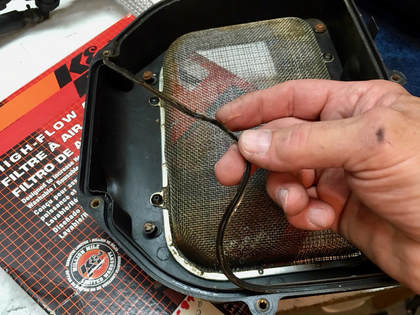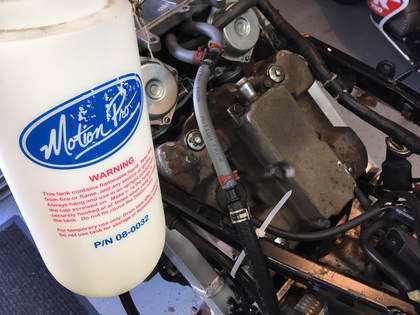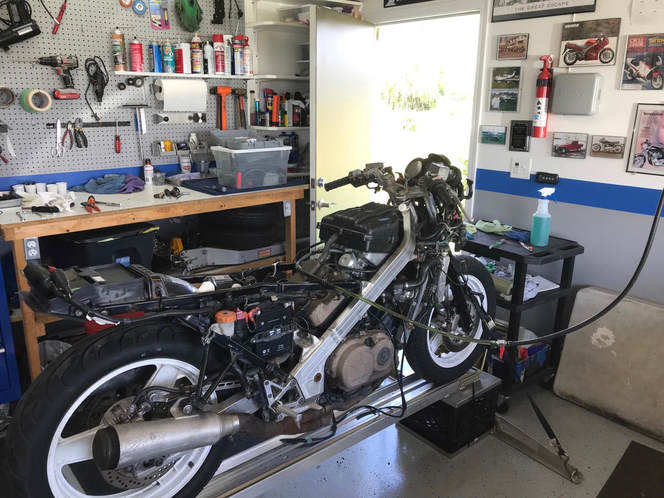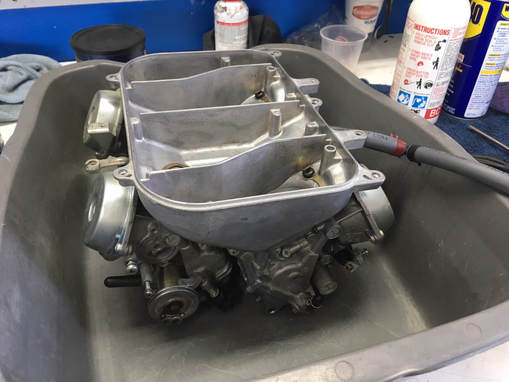Note: I will be syncing these carbs once the engine is running, so before proceeding with this install, I've connected the sync tool's vacuum hose adaptors and hoses — see a previous post ("Preparing For Carb Sync") for details.
Note: Check your carbs for leaks before installing: see my technique at the bottom of this post.
If your carb insulators (manifold boots) are hardened with age, simplify your life by installing fresh boots, which are still available from Honda. First remove the lower clamps and, with a large pliers, give the old boot a firm tug to remove. Clean up the area and push the new boot into place, noting that the groove adjacent to the word "Carb" is oriented to 12-o'clock (below). Install all eight boot clamps, oriented to the left, and tighten the lowers.
(click on any small image to enlarge)


(Right) At this point I'll connect the fuel I.V. direct to the carb intake line in preparation for engine start. If you do this, disconnect the fuel pump power supply at its connector just above the pump. The pump relay can remain connected.
You can also use the fuel tank and pump with all its plumbing hooked up.
(Below) Here's a tip I learned the hard way. You'll want to check your carb work for leaks, and having the carbs completely mounted is not the best time to do that — if there's a leak it'll be dripping all over your engine or, worse, overflowing the vents directly into the intake manifolds and down into the engine. Save yourself all that potential grief by checking the carbs on the bench.
I simply place the carb set into a large tub, connect the I.V., open the spigot, and let them set for a few hours. Any leaks are contained, and because the carbs are still off the bike, finding and fixing a leak is less painful.









 RSS Feed
RSS Feed